It’s easy to face a dilemma over your choice of window blinds. There’s no denying that window blinds can significantly transform your interiors. Blending their function and design aesthetics, these blinds deliver a refined profile to your residential or commercial space.
Different types of window blinds offer their unique benefits. So, it pays to know which type of blind would suit your interiors. With the right choice, you can enjoy tons of benefits from these installations.
What are the top benefits of window blinds?
Window blinds come with a plethora of benefits. No wonder, why so many households and corporate offices explore different types of window blinds for installation. Have a look at some of the key advantages of window blinds.
Control your privacy
Whether you install window blinds in your home or office, they help in controlling your privacy. Most importantly, these installations wouldn’t hinder fresh airflow. Whether you reside in a quiet neighbourhood or a bustling urban area, these blinds will help you control visibility.
Light control
With the right type of window blinds, you can control the extent of light entering the indoor space. These blinds come with fabric slats. This gives you better control of the direction and intensity of sunlight. This way, you can create a comfortable ambience at your home.
Better energy efficiency
Window blinds effectively block sunlight and thereby reduces the heat intensity of your indoors. Thus, warm summers wouldn’t be unbearably hot. This will help you save on your energy bills since you need not run your AC continually.
Different types of window blinds to choose from
Now that you know why installing window blinds is crucial, let’s explore the different types of window blinds.
1. Venetian Blinds
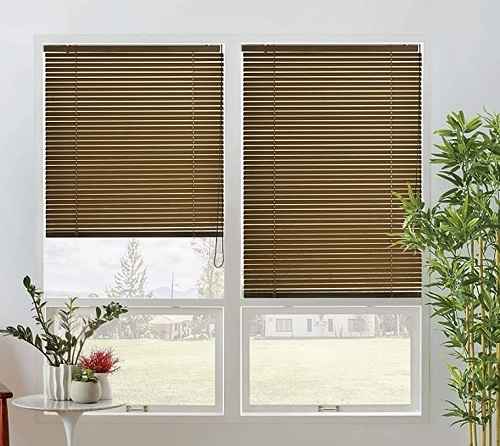
If you are looking for versatile blinds delivering classic beauty to your home, go for Venetian blinds. These blinds come with horizontal slats. You can tilt these slats and decide how much sunlight you want in your room. Whether you have a traditional room or a modern interior, you can install these blinds.
Pros
- Venetian blinds naturally complement different room styles.
- You can regulate the light intensity in your room.
- It’s easy to clean and maintain Venetian blinds
Cons
- If you have metal slats, they might prove noisy in windy conditions.
- These blinds are usually available in limited colour options.
- The horizontal slats accumulate dust that calls for regular cleaning.
2. Roman blinds

Roman blinds are known for their elegance and aristocratic looks. These are soft blinds made of fabric. When raised, they fold neatly. So, if you are willing to infuse a touch of sophistication into your interiors, go for Roman blinds.
Pros
- These blinds look aesthetically refined, enhancing the room’s ambience.
- The fabric is cosy, making the interiors warm and comfortable.
- Roman blinds offer better customization options with more colours, designers, and patterns.
Cons
- As a result of fabric accumulation, Roman blinds need more frequent cleaning.
- The light control options in Roman blinds are limited.
- The design may be bulky, obstructing light or window space.
3. Roller blinds
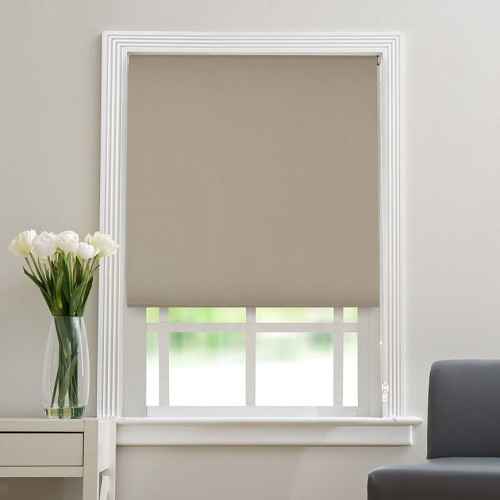
Sleek and simple, roller blinds continue to be a popular choice for modern homes in the UK. These blinds come with a single fabric piece. The mechanism enables you to roll this piece up and down. Contemporary homes with a minimalist design often find roller blinds perfect.
Pros
- The clean and sleek design goes well with modern homes.
- Roller blinds offer ease of operation and ensure easy maintenance.
- The fabrics are available in different light-filtering options.
Cons
- These blinds have limited adjustability.
- The fabric may accumulate dust, requiring frequent cleaning.
- Rolling up the fabric fully may present a stark appearance.
4. Cellular blinds
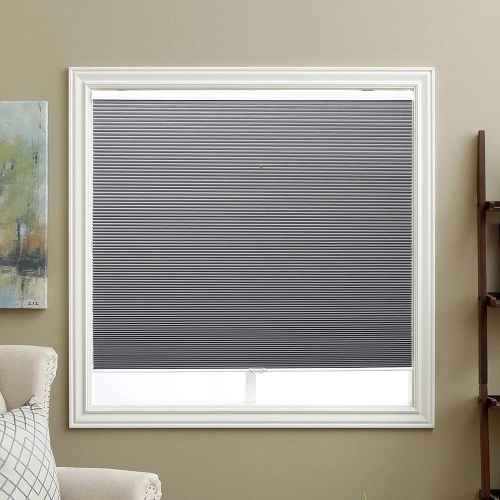
Also known as honeycomb blinds, you will identify a unique structure on these window blinds that look like honeycomb cells. If you are looking for a blind for insulating your interiors, go for cellular blinds. With different light-filtering options available, cellular blinds continue to gain popularity.
Pros
- The insulation properties ensure cost-effectiveness.
- The unique design makes your windows look visually appealing.
- Both blackout and several light-filtering variations are available.
Cons
- Cellular blinds can be more expensive due to their insulation properties and unique design.
- The cellular structure is delicate and requires gentle handling while cleaning.
- They offer fewer design options.
5. Vertical blinds

If you need blinds for patio doors, sliding doors, or large windows, vertical blinds would be the right choice. This type of window blind has vertical slats. You can draw them to a side or rotate them, as required.
Pros
- Vertical blinds seamlessly fit large windows.
- They offer excellent privacy and light control features.
- Besides being durable, vertical blinds can be cleaned easily.
Cons
- In windy conditions, vertical blinds can be noisy.
- The design options are limited compared to other types of blinds.
- The vertical slats quickly accumulate dust.
6. Pleated Blinds

Compact and neat, pleated blinds come with a soft texture. The best part is, you get lots of light-filtering options with pleated blinds. The texture looks soft and elegant, breathing sophistication into your home or commercial space.
Pros
- The unobtrusive look makes them ideal for different window styles.
- They enhance your room’s aesthetic appeal.
- Plenty of light-filtering options are available.
Cons
- They fail to ensure a complete blackout.
- Over time, these blinds may lose their shape.
- Being delicate, the cleaning process needs special care.
7. Wood blinds
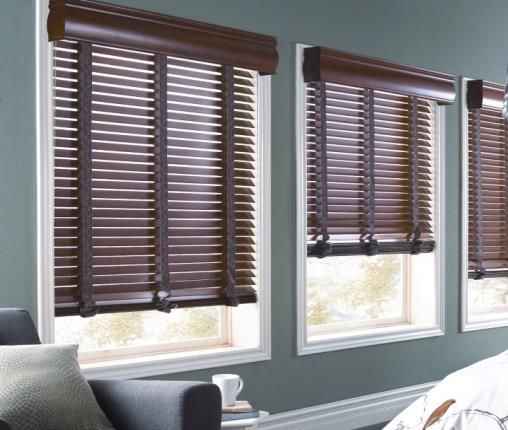
If you are someone looking for timeless and natural beauty, get wood blinds for your windows. Featuring horizontal slats, the organic essence of wood brings sophistication, warmth, and a touch of nature to your home.
Pros
- Wood blinds offer excellent light control options.
- They make the ambience inviting and cosy.
- The natural texture refines the atmosphere.
Cons
- In humid environments, the wood slats can warp.
- You need to regularly seal and maintain the material.
- Maintaining wood blinds can be expensive.
8. Faux wood blinds

To overcome the shortcomings of wood blinds, you may use faux wood blinds. Synthetic materials like composite wood or PVC mimic the looks of actual wood. Since this material doesn’t warp like wood, you can install these window blinds in your kitchen or restrooms.
Pros
- They are moisture-resistant and durable.
- Compared to real wood blinds, they are more affordable.
- Maintenance and cleaning are relatively easy.
Cons
- They don’t offer the same visual appeal as wood.
- Colour options are fewer in faux wood blinds.
- These window blinds tend to be heavier.
9. Bamboo blinds
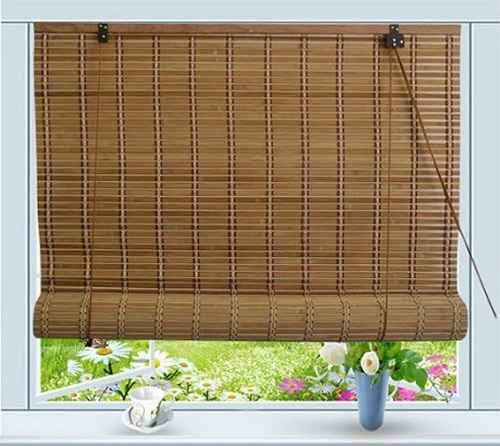
If you are looking for eco-friendly window blinds, check out bamboo blinds. Blending a tropical feel with the natural essence of wood, these blinds create a serene and relaxed ambience in your home. The light-filtering features of bamboo blinds are excellent.
Pros
- This is an environment-friendly housing option.
- You would love the tropical vibe at your home.
- The diffused light entering your home creates a warm glow.
Cons
- Bamboo needs better maintenance, leading to higher upkeep costs.
- Over time, these window blinds experience moisture damage.
- Privacy options are limited as the gaps in slats allow some external visibility.
10. Panel track blinds
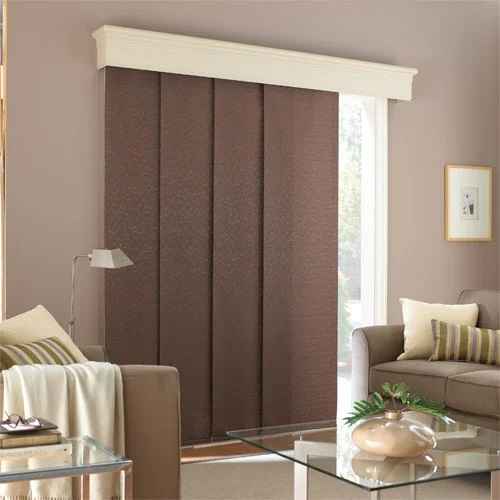
If you have large windows at your home, go for panel track blinds. This type of window blind also covers patio doors and serves as room dividers. The fabric panels in these window blinds glide along a track.
Pros
- These blinds can cover extensive areas.
- The sleek and contemporary design is ideal for minimalist spaces.
- Lots of customization features including blackout and light-filtering are available.
Cons
- Adjustability and light-control options are limited.
- The specialized construction makes them expensive.
- They also need a professional installation which adds to your cost.
Conclusion
Now that you are aware of the different types of window blinds, you can choose the right one for your property. Get the blinds customized as per your aesthetic sense and budget.
Also, consider your interior design and ambience while choosing the right window blinds. With the right choice, you can spruce up your interiors significantly.







